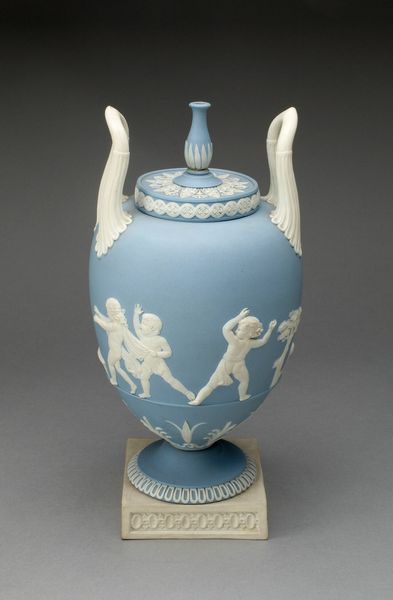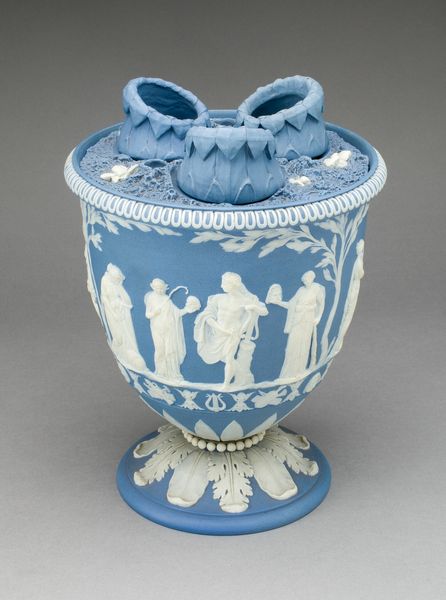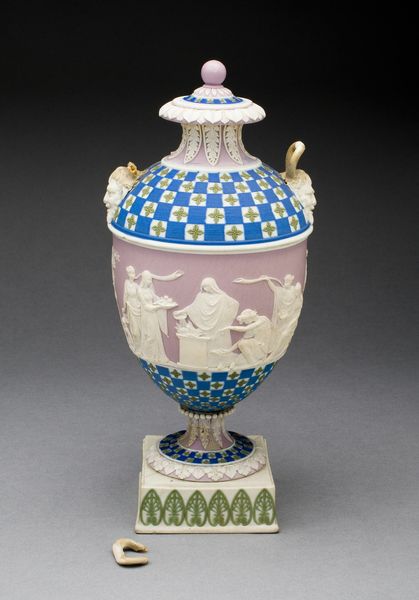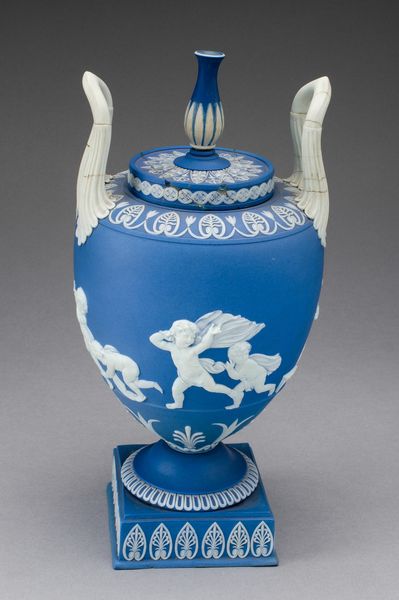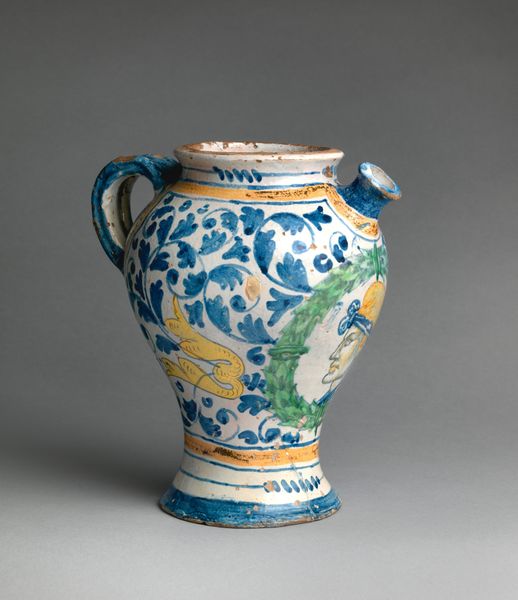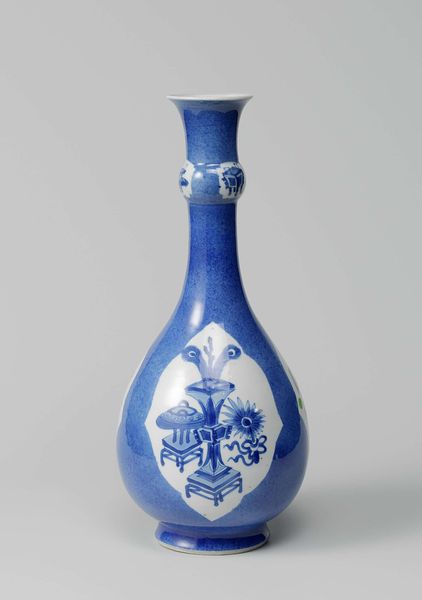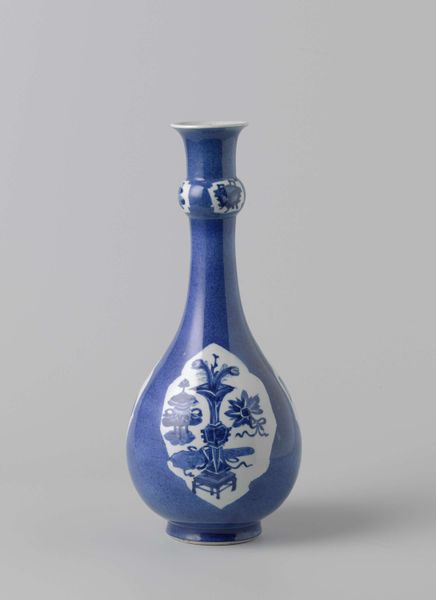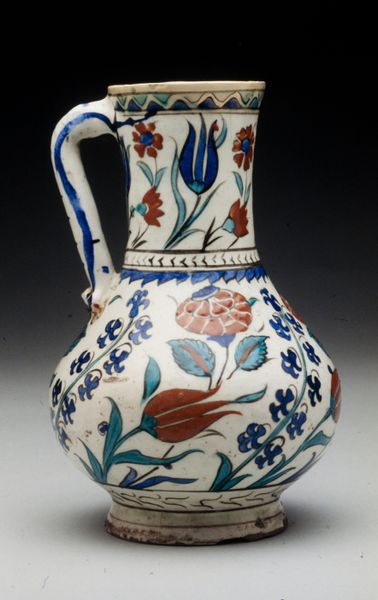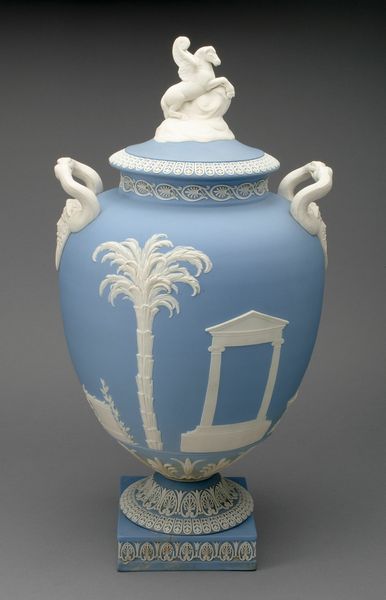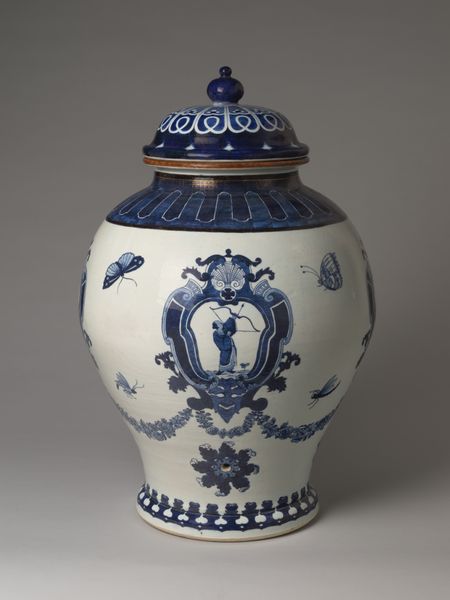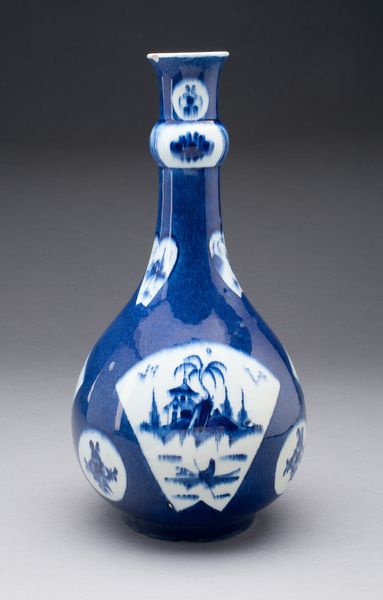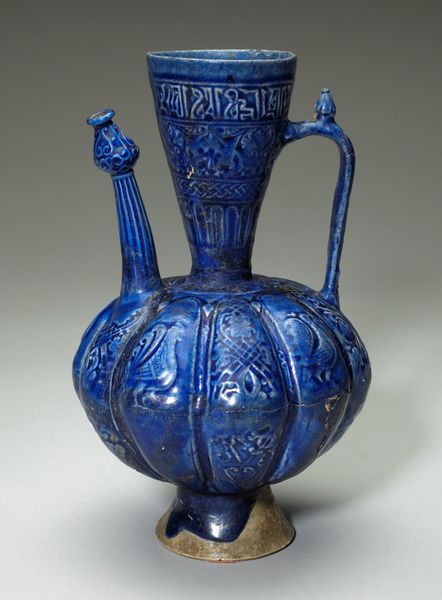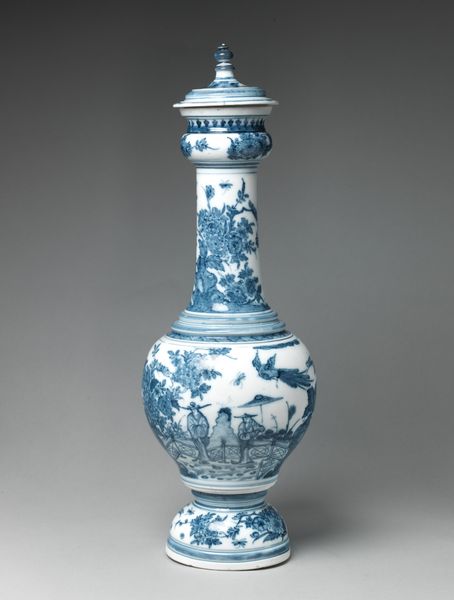
ceramic, sculpture
#
neoclacissism
#
landscape
#
ceramic
#
vase
#
vessel
#
england
#
sculpture
#
genre-painting
#
history-painting
#
decorative-art
Dimensions: 27.6 × 12.4 × 10 cm (10 7/8 × 4 7/8 × 3 15/16 in.)
Copyright: Public Domain
Curator: Isn't it lovely? This is an English ceramic ewer, created by William Adams around 1790. Editor: It’s so serene, the delicate blue and white—almost Wedgwood-like, and the classical scenes bring such a calming narrative to the piece. Curator: It certainly embodies the Neoclassical movement with its clear references to classical forms and decorative motifs, but I think it's more than mere imitation. We must consider the craftsmanship, the means of production. Adams, along with others, was pushing the boundaries of ceramic production at this time, elevating pottery from functional ware to an object of artistic and social significance. Editor: Precisely! I think it speaks to the 18th-century fascination with antiquity and, through this reproduction in domestic art, the bourgeoisie appropriated narratives of power and sophistication to cement their class position and align with idealized Greek aesthetics of power. Look closely at the vignettes – classical figures acting out pastoral scenes that promote themes of morality, and enlightenment, too. Curator: Yes, but let’s examine the materiality. The blue jasperware wasn’t merely chosen for aesthetics, but also for the technological advancements required to produce such a color uniformly. And the contrast with the applied white reliefs – consider the skill needed to create those crisp details in ceramic, demanding division of specialized labour and innovative workshop methods! Editor: Absolutely. While focusing on technique, we shouldn’t ignore the social implications. Pieces like this ewer reflect complex global trade networks in place, and hint at the exploitation that fuelled such industries through the sourcing of materials and colonial labor, even indirectly, contributing to empire’s power and global inequalities. Curator: The consumption habits around pieces like these really underline that; it became a signifier of refinement, a form of social performance and material competition, each design referencing the past while showcasing the present's capabilities of labor division and commercial availability. Editor: Which allowed for wider access to ‘high’ culture, albeit one heavily filtered and steeped in the socio-political dynamics of its time and always available mostly to white elite audiences. Still, its presence within these spaces helped perpetuate societal ideals and maintain distinct social strata. Curator: Reflecting on the conversation and my own views, it underscores for me the interplay between artistry, labor practices, and evolving technology... and that, I think, is really a part of art history often understated in this type of objects. Editor: And by considering both, we uncover this ewer to be a potent material object carrying layers of encoded social meanings.
Comments
No comments
Be the first to comment and join the conversation on the ultimate creative platform.
